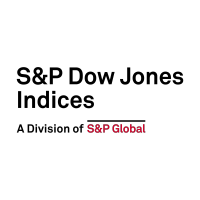Tag Archives: Anu Ganti
S&P Dividend Aristocrats and the Search for Income
A company’s dividend track record is often seen as a sign of corporate maturity and balance sheet strength, but not all dividend strategies are created equal. Join S&P DJI’s Anu Ganti, Ben Voros and Elizabeth Bebb for an exploration of what makes the S&P Dividend Aristocrats Index Series unique.
- Categories Factors
- Other Tags
Exploring Fixed Income’s Passive Potential
Passive investing has historically been more associated with equities than with fixed income, but recent data indicates a change could be in the winds. S&P DJI’s Tim Edwards and Anu Ganti take a closer look at what’s driving the shift and what a passive transformation could mean for fixed income markets.
- Categories Fixed Income
- Other Tags
Tracking the Emerging Market Yield Landscape with Indices
The iBoxx USD Emerging Markets Broad Overall Indices represent the most comprehensive fixed income hard currency snapshot of the market due to their broad methodology construction. Join S&P DJI’s Anu Ganti and Cboe’s Mandy Xu as they explore why emerging market bonds are coming back into focus for some yield seekers and how these new…
- Categories Fixed Income
-
Other Tags
corporate bonds, covered bonds, Derivatives, Emerging Market Bonds, emerging markets, fixed income, futures, iBoxx, iBoxx USD Emerging Markets Broad Corporates Index, iBoxx USD Emerging Markets Broad Overall Indices, iBoxx USD Emerging Markets Broad Sovereigns & Sub-Sovereigns Index, iBoxx USD Liquid Emerging Markets Sovereigns & Sub-Sovereigns Index, sovereign bonds, sub-sovereign bonds
- Categories
- Fixed Income
- Other Tags
- corporate bonds, covered bonds, Derivatives, Emerging Market Bonds, emerging markets, fixed income, futures, iBoxx, iBoxx USD Emerging Markets Broad Corporates Index, iBoxx USD Emerging Markets Broad Overall Indices, iBoxx USD Emerging Markets Broad Sovereigns & Sub-Sovereigns Index, iBoxx USD Liquid Emerging Markets Sovereigns & Sub-Sovereigns Index, sovereign bonds, sub-sovereign bonds
Diversification, Equity & Indices
The results of S&P DJI’s latest SPIVA U.S. Scorecard are in: Most large-cap active managers underperformed the S&P 500® for the 14th consecutive year in a row. 60% of active large-cap funds underperformed the S&P 500 in 2023, slightly better than the long-term average of 64%, and a relatively benign result considering the dominance of…
Bond Beginnings and Beyond
American political consultant James Carville once commented that he’d like to be resurrected as the bond market because, “you can intimidate everyone.” As of July 2023, the global bond market comprises about USD 135 trillion of securities, of which rated corporate debt represents USD 23 trillion.1 U.S. corporate debt makes up roughly half of the…
- Categories Fixed Income
- Other Tags
- Categories
- Fixed Income
- Other Tags
Happy Days for How Long?
With less than a month left to go to close out the year, it’s a good time to reflect on the highs and lows that market participants have experienced. While the year began with a rocky start due to the Silicon Valley Bank collapse, the market continued to power forward, stumbling in Q3 as 10-year…
- Categories Equities, Fixed Income, S&P 500 & DJIA
- Other Tags
What Do Insurance Companies Need to Know About SPIVA?
How and when are insurers implementing index-based strategies as they seek liquidity, diversification, and risk mitigation? S&P DJI’s Raghu Ramachandran and Anu Ganti join BlackRock’s Andrew Masalin to discuss what’s driving passive outperformance and the use of ETFs by insurers through the lens of SPIVA.
- Categories Equities, Fixed Income
- Other Tags
Finding Fee Savings in Fixed Income
One of the benefits of indexing is its low cost relative to active management. As indexing has grown, investors have benefited substantially by saving on fees and avoiding active underperformance. These benefits are not limited just to equities but have also extended to other asset classes including the fixed income space, where fees can play…
- Categories Fixed Income
- Other Tags
A Tactical Look at Sectors
How are advisors using sector data to understand market trends and inform investment decisions? S&P DJI’s Anu Ganti joins Fairlead Strategies’ Katie Stockton to discuss practical applications for sector indices.
- Categories Equities
- Other Tags
An Elevating Effect on Equal Weight?
The trouncing of smaller caps by mega-cap stocks has been one of the hallmark market themes of this year, with the S&P 500® Top 50 outpacing the S&P SmallCap 600® by 30% YTD.1 As a result of its inherent small-cap bias, the S&P 500 Equal Weight Index (EWI) has suffered accordingly, underperforming the S&P 500…
- Categories Equities
- Other Tags
- Categories
- Equities
- Other Tags










































